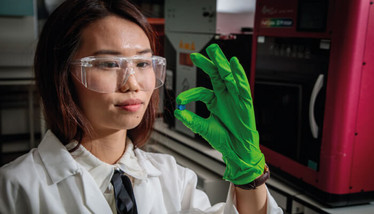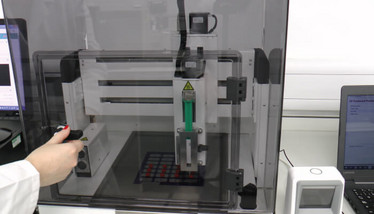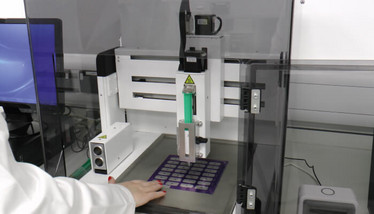
Dose Personalization with 3D Printing
What type of dosage form would a patient prefer to take? Additive manufacturing provides ultimate flexibility.
Simon Gaisford | | Longer Read

This article is part of our special focus on "traditional" pharma: The Small Molecule Manufacturer (read more here). You can find more articles from The Small Manufacturer here.

The technology has been in development since the 1980s but, today, 3D printing is widely used in prototyping, molds and tooling. In pharma, 3D printing can be used in a variety of different applications. Some equipment companies, for example, use 3D printed parts to lower the costs of building machines. But it can also be applied more directly in drug development through the printing of solid oral dosage forms. Simon Gaisford, Reader in Pharmaceutics and Head of the Department of Pharmaceutics at University College London (UCL) has combined his strong interest in 3D printing with his expertise in pharmaceuticals. Back in 2015, Gaisford and his team used 3D printing to create a variety of different shaped tablets - from pyramids to cylinders and more. The work was not only to explore the kinds of tablet shapes that could be printed, but also to investigate the effect of those shapes on drug release. Some geometric shapes featured faster drug release than others because of their surface area to volume ratio.
Gaisford has also been working to develop a universal pharmaceutical 3D printing system, which has been designed to print a variety of different drug products from pharmaceutical “inks.” To launch the technology, he set up FabRx.

What is FabRx?
FabRx is a spin out company from University College London focusing on the manufacture of medicines using 3D printing. We are aiming to develop a GMP-qualifiable 3D pill printer. 3D printers have been available for some time; anyone now can order a 3D printer online, but these systems cannot be used for medicines. To make pharmaceutical products, you need pharmaceutical-grade polymers and good manufacturing practice (GMP) qualification.
How do you apply the technology?
Our first aim is to be able to print what we consider to be the most useful pharmaceutical formulations on a research level. And then, in the long run, we see our printer system being used in hospital pharmacies to manufacture specialist medicines.
3D printing is just an umbrella term for a number of techniques. We have evaluated many of these for use in FabRx’s printer system and settled on three: polymer extrusion, laser sintering for powders, and gel extrusion. Our printer has three heads, enabling it to deliver each of these techniques.
When you blend a drug molecule with the print material, the properties of the drug can fundamentally change the material’s properties, resulting in an unprintable formulation. To drive our printer system, we have developed software that takes this into account, controlled by our company on a web-based system.
Our vision is that a pharmacist would log on to our server with their own identifier code and set the dose required for each tablet. The software automatically calculates what volume of material needs to be printed to make that dose. The raw material being printed needs to be GMP manufactured (not just the printer), with a barcode on it for traceability. The system recognizes the barcode on the printing stock and only then, once everything is in place, would printing commence.

What are the benefits of printed pills?
3D printing really lends itself to personalizing the dose of the drug given to patients through dose combinations. In 2019, we published the first use of a completely 3D-printed tablet in an in vivo human study to demonstrate that we get the same performance compared with standard therapy (1). At the moment, it would be very difficult to develop an economically viable printed aspirin tablet and get it approved for human use – because regular aspirin tablets are so cheap.
We took the alternative strategy of targeting pediatric formulations for a metabolic disease, called maple syrup urine disease (MSUD). Children diagnosed with MSUD require daily supplement doses tailored to the results of regular blood tests. Using current methods, preparation of different doses is a drain on both time and money. We printed chewable tablets in different flavors, colors and doses – one-month’s supply was printed in less than eight minutes – allowing for personalized dosage forms, and encouraging increased patient compliance. We showed that, after six months, these tablets were as effective as conventional medication in controlling the disease (1). We call these personalized medicines “Printlets.”
We have also looked into involving children in the creation process to help overcome psychological barriers to taking medicines. They can draw a shape on an iPad, and then print the tablet in that shape. It can be any shape they like!
There are also benefits for adults and geriatric patients. Patients with arthritis can have trouble picking up a flat, round tablet. Printing a different shape, such as a pyramid, means that at least one half of that tablet is always pointing up, making it easier to pick up. But it’s still small, so you can easily swallow it.
As an abuse deterrent for drugs such as opioids, polymers also lend themselves to delayed release tablets. They can be designed so a user (or an abuser) isn’t able to crush and dissolve the tablets.
We can also use polymers to print multi-layer tablets – so far we’ve made it up to seven drugs in a single tablet, each in a different layer. A patient may have to take two or three types of medication every day (often more – polypharmacy is increasingly prevalent), with ratios varying from patient to patient. High pill burdens and complex regimens can lead to poor adherence, which can be an important factor in controlling a patient’s disease. A good example of this type of situation is hypertension. We are working on a multilayer pill printing project with local NHS partners to enable patients to have all their antihypertensives medication in one pill. Our printer system will allow one pharmacist to manufacture tablets with different combinations for each patient. Antihypertensives themselves are pretty cheap – but downstream, the expense is cardiovascular disease. If we are able to reduce the pill burden to a single pill per day, irrespective of the number of different medicines someone is taking, it could have big financial consequences for healthcare systems.
- A Goyanes et al., “Automated therapy preparation of isoleucine formulations using 3D printing for the treatment of MSUD: First single-centre, prospective, crossover study in patients,” International Journal of Pharmaceutics, 567 (2019).
Printing Technology Director at FabRx.



















